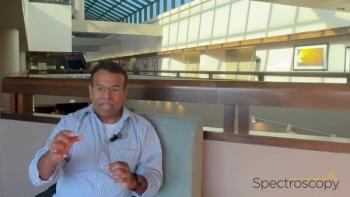
Using IR Spectroscopy to Ensure Food Safety
Using principal component analysis, FOSS Analytical has shown that it is possible to use IR spectroscopy to analyze raw milk before it reaches supermarket shelves.
Natural raw milk has a unique "fingerprint"--a particular spectrum that identifies it as pure, raw milk. Through the use of infrared (IR) spectroscopy, scientists can detect whether a milk sample is contaminated long before it reaches supermarket shelves as either milk products or powdered milk. Using the devices developed by FOSS, if the spectrum from the sample being tested does not match the known spectrum for milk, the instrument will give a warning immediately.
According to Torben Ladegaard, chief operating officer for FOSS (Hillerød, Denmark), "In the world's food production sector, it's crucial to have systems capable of identifying authentic raw materials to ensure that food quality and safety requirements are met."
The main advantages of IR spectroscopy are its speed, good resolution, cost-effectiveness, and the fact that it is a nondestructive technique. There is the potential for this technique to be used to analyze a wide range of compounds, which can be very helpful in the area of worldwide food safety.
Newsletter
Get essential updates on the latest spectroscopy technologies, regulatory standards, and best practices—subscribe today to Spectroscopy.





